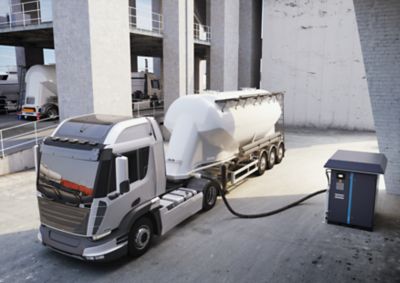Enhancing dust suppression in mines with compressors
Mining operations are crucial for resource extraction, but they also generate significant amounts of dust in mines. This dust, released during drilling, blasting and material handling, poses serious health, environmental and operational challenges. Effective dust suppression in mines is essential to ensure worker safety, equipment longevity and regulatory compliance.
Why dust control in mines matters
Uncontrolled mining dust can lead to:
- Respiratory illnesses such as silicosis
- Reduced visibility and increased accident risk
- Accelerated wear on machinery
- Environmental pollution and regulatory penalties
Implementing robust dust control in mining is not just a best practice – it's a necessity.
Common dust suppression methods
To address the hazards of dust in mines, mining companies employ various dust suppression methods to control dust, including:
- Water sprays: A widely used method that binds dust particles and prevents them from becoming airborne.
- Chemical dust suppressants: Specialized agents are used to enhance particle cohesion, providing longer-lasting dust control in mines.
- Enclosures and ventilation systems: Using enclosed workspaces and advanced filters helps control dust at its source. This reduces dust exposure.
- Fogging systems: High-pressure fogging creates micro-droplets that capture dust particles in the air and improve air quality.
The role of compressed air and compressors
While water and chemicals dominate traditional dust suppression in mines, compressed air plays a crucial supporting role in several key applications:
- Dust extraction systems: Many mines use dust extraction units that run on compressed air. These units effectively remove airborne particles from work areas.
- Pneumatic conveying: Compressed air assists in transporting fine materials without generating excessive dust.
- Cleaning and maintenance: Air-powered cleaning systems help remove accumulated dust from machinery, preventing buildup and improving equipment longevity.
- Atomizing technology: Advanced dust suppression systems use compressed air to atomize water into tiny droplets. This creates a mist that binds dust particles without adding excessive moisture.
These applications make compressed air a powerful tool in mining dust control strategies.
Optimizing air compressors for dust control
To fully leverage the benefits of compressed air in dust suppression in mines, mining operations should focus on:
- Proper compressor sizing: Ensure the compressor has the right capacity to support dust suppression systems. Verify that it is appropriately sized for the actual working pressure required by the application.
- Energy-efficient technologies: Invest in modern compressors with variable speed drives (VSDs) to reduce energy consumption.
- Regular maintenance: Maintain filters and check for leaks to ensure clean, high-performance air delivery.
Key takeaways
Dust suppression in mines is a vital component of responsible mining, balancing operational efficiency with environmental and health considerations. While water-based systems remain important, compressed air and compressors are essential in mitigating dust, supporting extraction systems, and enhancing overall mine safety. By leveraging advanced air technology, mining companies can achieve more effective dust control while optimizing resource consumption.

